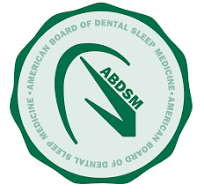How To Interpret Wrist Pulse Oximeter
Wrist Pulse Oximeter for Titration of MAS
There are two channels to this device:
- Pulse
– measured heart rate.
- Oximetry
– measures blood oxygen saturation.
Context
To make a decision on what to do next, need contextual information.
- Patient information (height, weight, age, neck size, BMI)
- Original PSG from a Board Certified Sleep Physician
- Need to know what MAS is being used and date of insertion
- What were the chief complaints (CC) or symptoms at beginning of treatment
- Are the subjective symptoms and are they resolved?
- Epworth Sleepiness Scale (ESS) and Patients Global Impression of Changes Scale (PGIC)
- Is the MAS advanced as far as possible?
- What was this study for?
- Final to determine if patient is ready for MD referral.
- To see if advancement is needed.
- Other relevant notes (screening, yearly recall or other).
Possible MAS titration options
Based on that context and the study purpose,
communication to staff (and/or patient) of the next step.
- Advance MAS and repeat HST
- Send patient to MD for final PSG or HST now
- Advance MAS and send to MD for final PSG or HST
- Send for PSG to determine why subjective symptoms remain
- Send to MD for PSG and consider Combination therapy (add CPAP)
- Other (add rubber bands or reset mechanism)
Interpretation of Data
- The first thing to look at is the time under 90%. Conventional wisdom and growing research indicates that less than 1% of the time under 90% is acceptable. Any more than that, the objective signs of OSA are not resolved.
- Then comes the SpO2 (Peripheral capillary oxygen saturation). Look for artifacts or one time spikes to a low O2 level. Cross those out as artifact. Re‐adjust the oxygen nadir (lowest point) according to the graph.
- Next is the heart rate variability. Look for a HR line on the graph that is relatively smooth (like a fine saw blade) and calm. It should be fairly level across the graph with perhaps a slight decline through the night. If there are many jumps to a higher HR throughout the night, then this indicates that possible respiratory effort is still going on. Remember that some medications and pacemaker make this measurement void.
- Then last look at events. This has to do with how the auto scoring is set up. Most software by default, will score an event if the O2 levels drops 4% from normal (96%). Preferred is a 2‐3% desaturation (this would be close to the AHI in a PSG). Look for the “index,” which means the average events per hour all night. But also look at how long the events are. Usually they are 20 seconds or less in length. If longer, then that means that one can have few events, but they can be long (hypopnea) in length, indicating long times of limited flow.
-2700x842-1920w.png)









